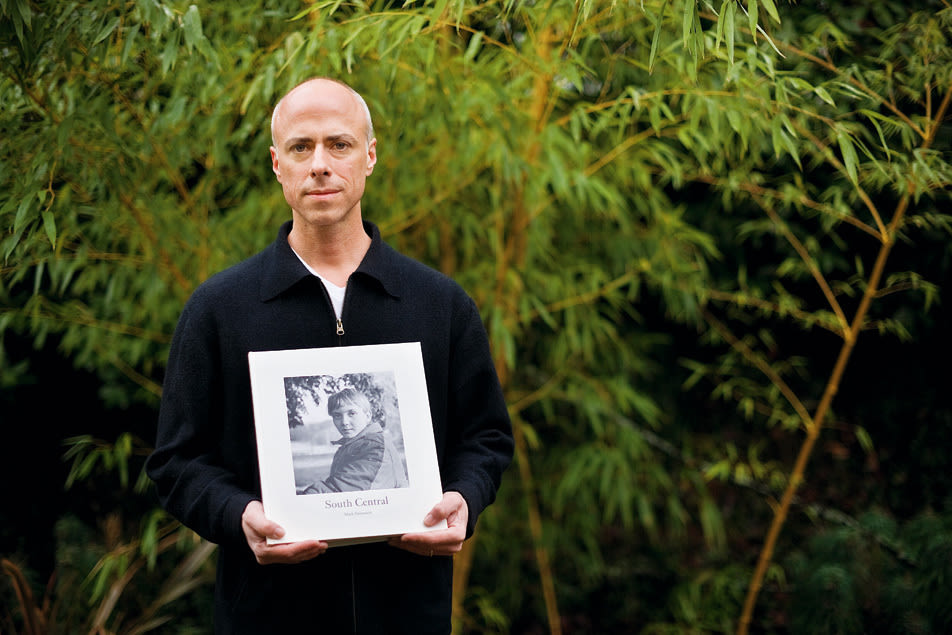Bound for Glory

Image: Daniel Root
"I LOVE GARDENING,” says Chris Pichler, peering at an exotic stand of bamboo from a window in his office—a converted, second-floor bedroom in a historic Alameda house. One of the species he’s planted in his backyard has stems as black as ink, and another will one day grow as thick as a porch post. “I love gardening more than publishing.”
The wistful comment is belied by the cartons and shelves of books that climb the walls of his Nazraeli Press headquarters. Pichler (pronounced “pick-ler”), a youthful 42-year-old with a light step and a quiet voice, founded the boutique-publishing enterprise 19 years ago. Since then, Nazraeli’s exquisitely designed books, featuring the works of renowned art photographers, have earned an avid worldwide following. Pichler, like a master gardener, has nurtured every one.
Nazraeli publishes roughly 30 new titles each year, including monographs of photo artists such as Lee Friedlander, David Maisel, Bill Jay and Daido Moriyama. The books’ special appeal comes in part from the gallery-caliber images between the covers—such as the harrowing but soulful portraits of homeless men in a California beach town in Jay’s Men Like Me, or the grainy, penumbric shots of Tokyo’s red-light district in Moriyama’s 2004 Memories of a Dog. But what really sets Nazraeli books apart, even from most other art publishers, are their unique formats. For example, the cover of Japan—a collection of stunning landscapes by noted British-born photographer Michael Kenna—is afire with red lingerie fabric sourced from Tokyo’s garment district. A 2006 Kenna book, Hokkaido, is folded within whisper-thin slices of sweet-smelling maple wood. (It was inspired by a Japanese bar menu.) And then there’s Masao Yamamoto’s Nakazora, a wooden box holding a scroll that uncurls to reveal shifting constellations of tiny still-lifes, nudes and landscapes. The format befits the Japanese photographer’s work, which in gallery settings is often displayed in groupings of small prints.
No wonder the books, which are printed in runs that range from 500 to 3,000 copies, are sold in art galleries—as well as, of course, in bookstores, museums (including the MoMA in New York) and designer retailers from West Elm to Ralph Lauren.
“It’s very easy to spend money in publishing,” Pichler says. “Anybody can go and order some exotic Italian leather [for a book cover]. But what’s really fun is to find new ways of using materials.”
While getting his BFA in photography from Arizona State University, Pichler, a Kansas native, realized that he wanted to publish photographs, not make them. He founded Nazraeli after moving to Germany in 1989—the business is named for a guardian angel he invented as a child—and he recalls pulling all-nighters to assemble copies of his first monograph by hand. “I basically ran it like a lemonade stand,” he says, smiling. His guardian angel followed him to San Francisco and, in 2001, to Portland, where he continues to live with his wife, Japan-born art representative Maya Ishiwata (whose influence partly explains Nazraeli’s recent tilt toward Japanese photographers and imagery).
In their Alameda office, Pichler and Nazraeli’s director, Alison Crosby, labor in relative obscurity, as they prefer. “We let people find us,” Pichler says. For Portlanders, that could mean browsing Powell’s photography shelves, where many of Nazraeli’s standard monographs typically retail at around $50 to $75, or ordering books directly from Nazraeli’s website (Nazraeli.com). It could also mean patronizing galleries, such as PDX Contemporary Art in the Pearl, for more esoteric releases—special editions of Hokkaido, packaged with original artwork, were offered last year for $1,000.
But even the $40 titles in the popular One Picture Books series, Nazraeli’s lowest-priced offerings, can be hard to track down. These compact, colorful, 16-page volumes are printed in editions of 500, numbered and signed by the artists. Each contains a small original print, and most are presold to collectors. A set of the first 40 titles in the series was recently sold by a rare bookseller in New Mexico at a 430 percent markup. “Some of our customers buy two copies,” says Crosby. “One to enjoy, and one to set aside as an investment.”
It’s unlikely that Nazraeli will overtake art publishing giants like London’s Phaidon or Cologne’s Taschen anytime soon, but that’s not the company’s ultimate goal. Pichler and Crosby have no intention of taking their brand to the mass market, which might involve compromising craftsmanship, not to mention force them to outgrow their cozy Alameda headquarters.
“I don’t want it to get bigger,” Pichler says, glancing out the window, where rain falls softly on the bamboo. “I wouldn’t want more.”




